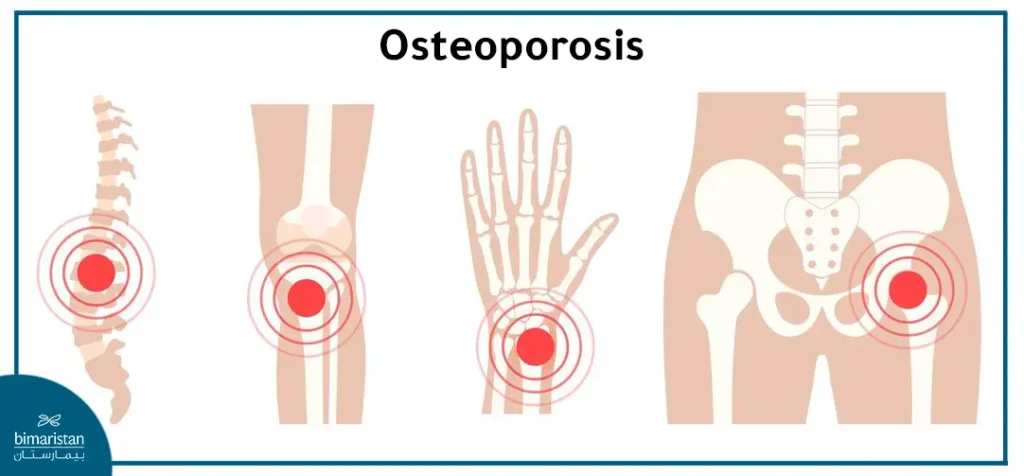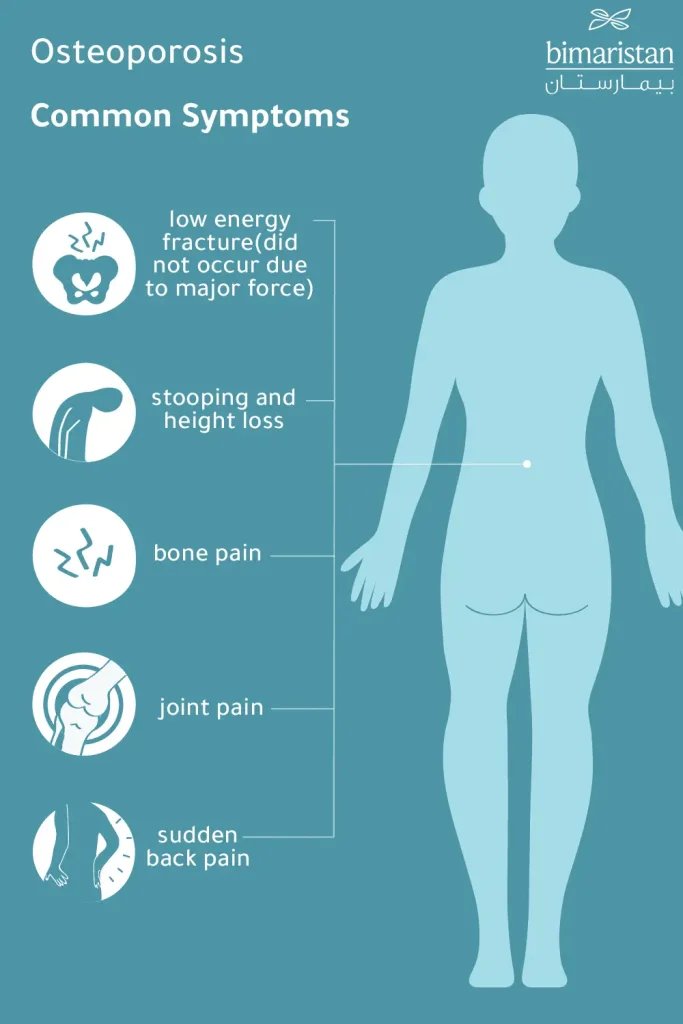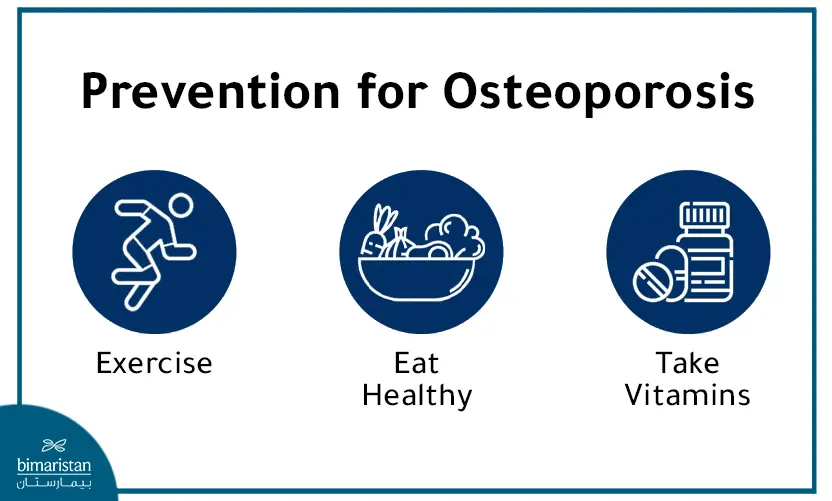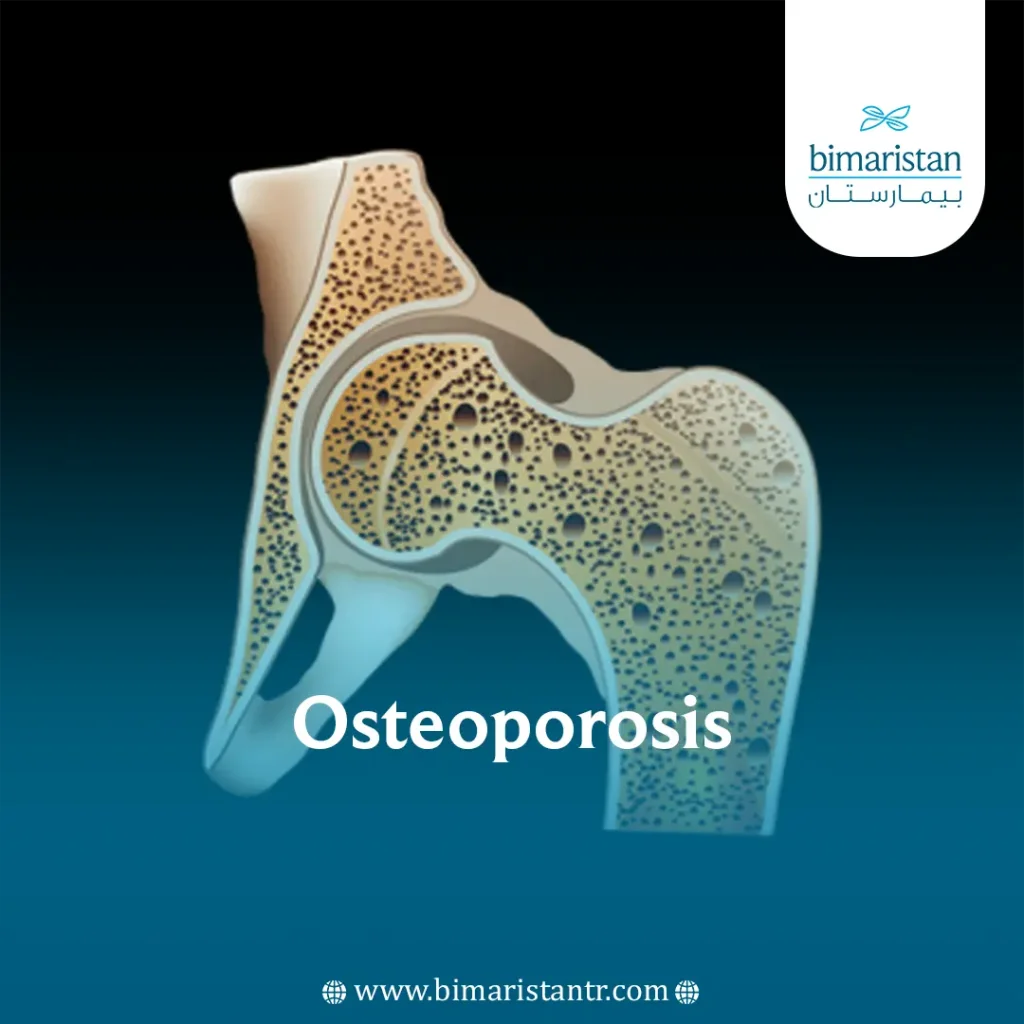Bones in our body are tissues that are constantly renewed. A healthy body works to remodel bones by breaking down old bone tissue and replacing it with new bone tissue. It occurs when catabolism continues without sufficient bone tissue building.
Fragility-related fractures lead to a significant reduction in quality of life, with increased morbidity and mortality rates, and it is worth noting that women are more susceptible to osteoporosis than men.
?Osteoporosis what is it
It is a disease that reduces the strength of bones, making them more fragile and susceptible to fracture even with the slightest trauma. Due to the absence of early warning signs, it is often referred to as a “silent disease.” Patients may not feel any change until the fractures occur, which are most often in the spine, hip, or wrist but also occur in the knee.

The internal structure of the bone resembles a honeycomb. In osteoporosis, the walls of this network shrink, and the gaps between them widen while the outer layer of the bone becomes thinner, increasing its weakness.
In the advanced stages of the disease, even simple movements such as coughing or mild bumping may cause fractures. Patients also experience slow recovery from fractures, which may result in persistent pain. Hip and spine fractures are at the highest risk, as they can significantly decrease the ability of older people to move and rely on themselves.
Types of osteoporosis
Osteoporosis is divided into two basic types, each of which occupies a distinct path in development and management:
Primary osteoporosis
The most common form usually appears with age and is greatly affected by hormones, especially in postmenopausal women due to the decline in estrogen levels. This causes low bone density and increases the risk of fractures. The senile form of the disease affects men and women over seventy, increasing the rates of fractures in the wrist, pelvis, and vertebrae.
Secondary osteoporosis
It is caused by other medical reasons or prolonged use of certain medications and includes conditions such as kidney disease, the effects of treatment for some tumors, and taking steroids in large doses. This condition is of particular importance because it can be improved by avoiding the cause.
Symptoms of osteoporosis
The symptoms of osteoporosis are often unnoticeable, such as pain or fever, but there are symptoms that you should pay attention to. Fractures resulting from even the slightest injury may be the first signs of osteoporosis, which may come in the form of pain or swelling after a minor fall, as in the case of osteoporosis in the knee.
The symptoms of osteoporosis in women can appear similar to their appearance in men, but there are some differences due to hormonal and physiological differences between the sexes.
Symptoms of osteoporosis in women
- Noticeable loss in height
- Postural changes such as stooping or kyphosis
- Weak bones, which means they are more susceptible to fractures
Symptoms of osteoporosis in men
- Shortness of breath, resulting from narrowing of the spinal vertebrae, which affects lung capacity
- Stooping and height loss
- Sudden back pain
- Joint pain
- Bone pain

Physical changes may occur gradually and are often noticed by family members before the patient himself. Damaged vertebrae in the lumbar spine can generate persistent back pain.
Osteoporosis causes
Osteoporosis occurs when bones lose too much of their density and bone tissue structure changes. Certain risk factors may cause or increase the risk of osteoporosis.
Many people have some risk factors, but others may have no specific risk factors. Some risk factors cannot be modified, and others may be modifiable.
Non-modifiable factors
Gender: Higher in women, especially due to lower bone density and smaller bone size compared to men.
Age: Bone loss increases with age, and new bone growth slows, and the risk increases in men after the age of 70.
Body size: Higher risk for lean individuals with lean bones due to lower bone density.
Race: White and Asian women are at higher risk, and Black and Mexican American individuals are at lower risk.
Family medical history: A greater risk if there is osteoporosis or hip fractures in a family member.
Hormonal changes: postmenopausal women or women with menstrual disorders, and men with diseases that cause low testosterone levels.
Modifiable factors
Diet: Low intake of calcium and vitamin D, crash diet, or lack of protein intake.
Some medical conditions: Such as glandular and hormonal diseases, digestive diseases, rheumatoid arthritis, some cancers, HIV/AIDS, and anorexia nervosa.
Medications: Long-term use of glucocorticoids or corticotropin hormone, antiepileptic drugs, cancer drugs that affect hormones to treat breast cancer, proton pump inhibitors, selective serotonin reuptake inhibitors, and thiazolidinediones for type 2 diabetes.
Lifestyle: low physical activity, alcohol consumption, and smoking.
Complications of osteoporosis
People with osteoporosis face an increased risk of serious complications, mainly including bone fractures, most common and serious in the spine and hip. Hip fractures are considered one of the most severe complications as they can lead to limited mobility and increase the risk of death during the year following the injury.
Fractures in the spine are considered a serious complication, as they can lead to a condition called “vertebral collapse,” which results in severe back pain, a decrease in stature, and a noticeable change in the body’s position as it leans forward. This decrease in the patient’s physical abilities reduces the overall quality of life.
Diagnosis of osteoporosis
Doctors usually diagnose osteoporosis during a routine examination for the disease. The US Preventive Services Task Force (USPSTF) recommends screening for women:
- Over the age of 65
- At any age if they have factors that increase the chance of developing osteoporosis
Due to the lack of available evidence, the USPSTF has not made recommendations regarding osteoporosis screening in men.
During your visit to the doctor, remember to report:
- Any previous fractures (shoulder fracture)
- Lifestyle, including diet, exercise, alcohol use, and smoking
- Current or previous medical conditions and medications that can contribute to low bone mass and increased risk of fractures
- Family history of osteoporosis and other diseases
- Date of a woman’s last menstrual period
The doctor may also perform a physical examination that includes checking:
- Loss of height and weight
- Changes in standing posture
- Balance and walking
- Muscle strength, such as the ability to stand and sit without using the arms
In addition, your doctor may order a test that measures bone mineral density (BMD) in a specific area of bone, usually the spine and hip. BMD testing can be used to:
- Diagnosis of osteoporosis
- Early detection of bone density deficiency
- Predicting the risk of future fractures
Monitor the effectiveness of ongoing treatment for osteoporosis
The most common test to measure bone mineral density is dual-energy X-ray absorptiometry (DXA). It is a quick, painless, and non-invasive test. DXA uses low levels of X-rays as the scanner passes over the body while you lie on a table. The test measures bone mineral density (BMD) in the skeleton and at various sites prone to fractures, such as the hip and spine. Measuring bone density by DXA in the hip and spine is the most reliable way to diagnose osteoporosis and predict fracture risk.
Some people have a peripheral DXA machine, which measures bone density in the wrist and heel. This type of DXA is portable and may facilitate screening, however, the results may not help doctors predict future fracture risk or monitor the effects of medications on the disease.
The doctor will compare the patient’s bone density (BMD) test results to the average bone density of healthy young people and the average bone density of other people of the same age, sex, and race. If the mineral density is below a certain level, osteoporosis will be diagnosed, and the doctor will recommend some medications and give some advice to improve the lifestyle.
Sometimes, your doctor may recommend a quantitative ultrasound scan (QUS) of the heel. This test evaluates bones but does not measure bone mineral density. If the QUS test indicates osteoporosis, you will still need a DXA test for a definitive diagnosis.
Osteoporosis prevention
- Follow a diet rich in calcium
- Obtain a sufficient amount of vitamin D through safe exposure to the sun and eating some foods rich in vitamin D (fish, animal liver, eggs, and fortified foods such as low-fat milk and ghee)
- Exercise that promotes bone density (swimming, jogging, moderate weightlifting)
- Quit Smoking
- Limit alcohol consumption

Medication for low bone density
In addition to diet and lifestyle changes, your doctor may recommend medication. Options may include:
Bisphosphonates
There are two main types of bisphosphonates:
- Oral bisphosphonates (alendronate, risedronate, and ibandronate)
- Intravenous bisphosphonates (pamidronate and zoledronic acid)
Denosumab (Prolia)
It is an injection given under the skin twice a year. Denosumab slows bone breakdown and is effective when treatment is given twice yearly, but bone density can decrease once treatment is stopped.
Testosterone to treat osteoporosis
Men with low testosterone levels can increase bone density. Testosterone doses are given via injections, implants, skin patches, oral capsules, gels, or creams to return blood testosterone levels to normal.
Doctors recommend limited use of medications when they are ineffective or a patient suffers fractures despite being treated. A specialist can review these conditions and prescribe specific medications that can help build bone (e.g., romosozumab or teriparatide).
It is important to note that all medications have potential side effects, so you should consult your doctor if you encounter any suspicious symptoms.
Osteoporosis treatment
Despite the effectiveness of drug treatment, sometimes some patients prefer hormonal or natural treatment that suits their condition. Treatments include:
Hormone therapy for osteoporosis
There are several types of hormonal treatment for osteoporosis, including the following:
Parathyroid hormone (PTH)
The parathyroid glands produce the hormone parathormone. This chemical regulates the amounts of calcium, phosphorus, and magnesium in the bones and blood. Parathormone therapy stimulates the formation of new bone and can increase bone density and strength. This treatment is most often used in individuals who have had a thyroidectomy. This medicine is an 18-month course of daily injections used for people with severe osteoporosis when other types of medicine are considered either inappropriate or ineffective.
Menopausal hormone therapy (MHT), (formerly known as HRT)
The female sex hormone estrogen plays an important role in maintaining the strength of bone tissue. Menopause causes a significant decrease in estrogen levels and increases the risk of osteoporosis and bone fractures. While MHT boosts estrogen levels and prevents postmenopausal osteoporosis, it has also been associated with an increased risk of a number of conditions, such as venous thrombosis (blood clots in the veins) and breast cancer.
However, MHT is very useful for treating symptoms such as flushes, sweating, and sleep disturbances that occur during menopause. Although it is no longer recommended for long-term use to manage low bone density, it is considered a first-line treatment for women under 60 who are at risk for it.
Melatonin
It is a hormone made by the pineal gland. Melatonin has been touted for years as a natural sleep aid as well as an anti-inflammatory agent. Researchers now believe that melatonin promotes bone cell growth.
Melatonin can be taken in capsules, tablets, or liquid form, and it is considered very safe to take. However, it can cause drowsiness and interact with antidepressants, blood pressure medications, and beta blockers, so you should consult a doctor first.
Natural treatment for osteoporosis
Physical therapy aims to manage or treat the condition without the use of medications. Some alternative treatments may be used for osteoporosis. Although there is not much scientific or clinical evidence to suggest that it is truly effective, many people report success with the treatment.
Although more scientific research is needed on this topic, some herbs, and nutritional supplements may reduce or potentially stop bone loss caused by low bone density.
Red clover
Red clover is thought to contain estrogen-like compounds. Since natural estrogen can help protect bones, some alternative care providers may recommend its use to treat osteoporosis.
However, there is no scientific evidence to prove that red clover is effective in slowing bone loss.
The estrogen-like compounds in red clover may interfere with other medications and may not be suitable for some people. There are potential drug interactions and important side effects.
Soy
Soybeans used to make products like tofu and soy milk contain isoflavones, which are estrogen-like compounds that may help protect bones and limit bone breakdown.
It is generally a good idea to talk to your doctor before using soy to treat low bone density, especially if the patient has an increased risk of estrogen-dependent breast cancer.
Black cohosh
Black cohosh is a plant that has been used in Native American medicine for years. It has also been used as an insect repellent. It contains phytoestrogens (estrogen-like compounds) that may help prevent osteoporosis.
A 2008 study showed that black cohosh promoted bone formation in mice. More scientific research is needed to determine whether these findings can be expanded to treat humans with osteoporosis.
Horsetail
Horsetail is a plant with potentially medicinal properties. The silicon in horsetail is thought to help reduce bone loss by stimulating the rebuilding of new bone. Although there are no clinical trials to support this claim, some doctors still recommend it.
Acupuncture
Acupuncture is a treatment used in traditional Chinese medicine. The practice involves placing very thin needles at strategic points on the body. This method is believed to stimulate various organ and body functions and promote healing.
Acupuncture is often combined with herbal treatments. Although the success of this method as a complementary treatment for osteoporosis is supported, more studies are necessary before we know how effective it truly is.
Tai chi
Tai Chi is an ancient Chinese practice that uses a series of body postures that flow smoothly and gently from one to the next.
Studies by the National Center for Complementary and Integrative Health suggest that tai chi may boost immune function in older adults.
It may also improve muscle strength, and reduce muscle or joint pain and stiffness. A regular routine and constant monitoring can help improve balance and physical stability and reduce fractures.
Continuing advances in medical research continue to highlight new therapeutic approaches and interventions aimed at preventing osteoporosis and preventing fractures. At Bimaristan Center, we look forward to providing the best possible care and support to those at risk or already affected by osteoporosis.
Sources:
- Health Line
- Johns Hopkins Medicine
- NIH



